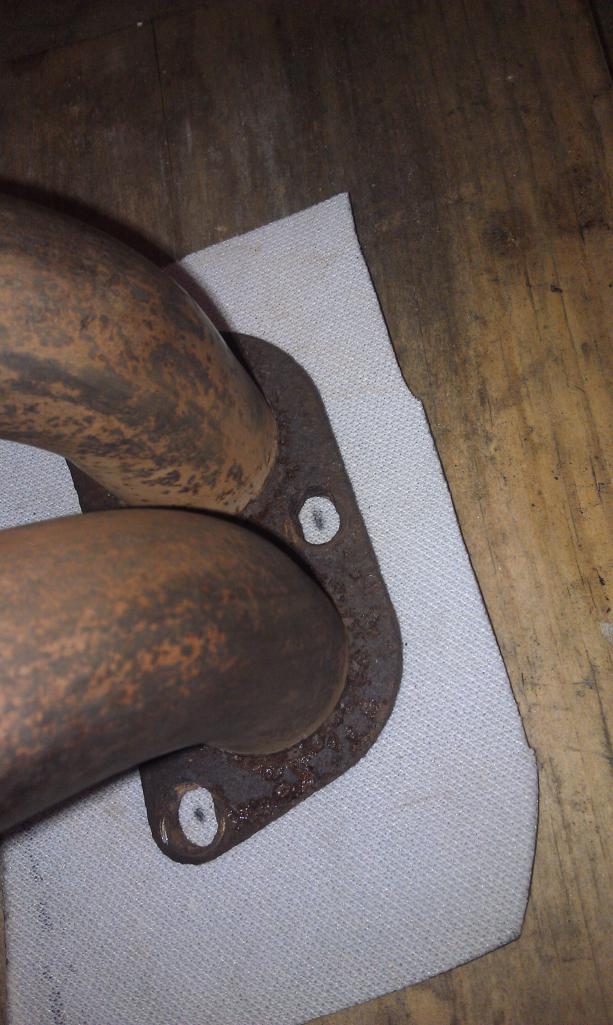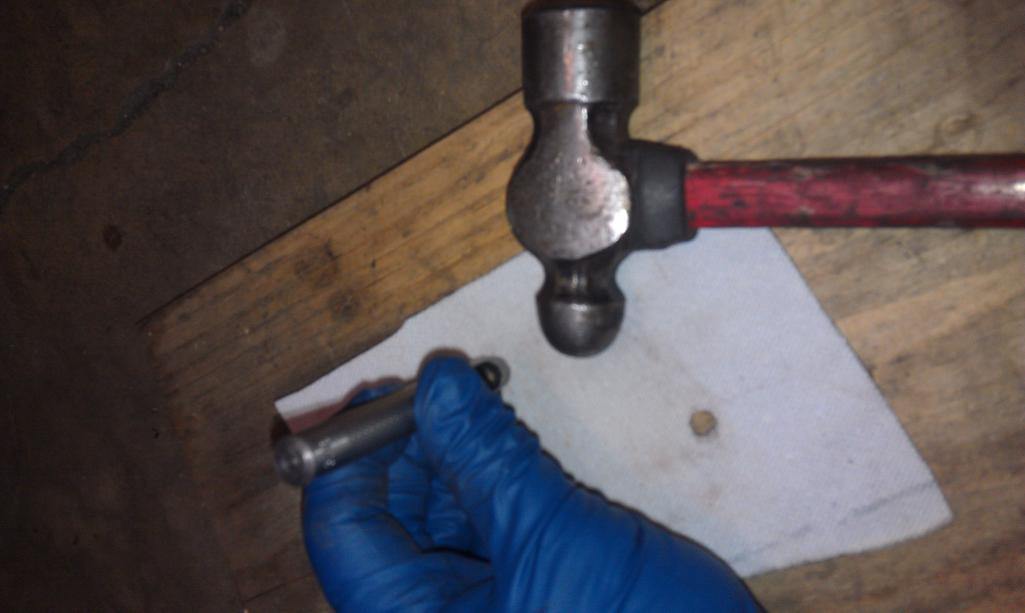|
|

|
Porsche, and the Porsche crest are registered trademarks of Dr. Ing. h.c. F. Porsche AG.
This site is not affiliated with Porsche in any way. Its only purpose is to provide an online forum for car enthusiasts. All other trademarks are property of their respective owners. |
|
|
| SpecialInt |
 Feb 4 2014, 07:22 PM Feb 4 2014, 07:22 PM
Post
#1
|
|
Newbie  Group: Members Posts: 6 Joined: 3-December 13 From: Maryland Member No.: 16,722 Region Association: None |
I have some SS heat exchangers for sale and someone asked if I had tested them for leaks. I had not. A few people chimed in with some procedures to test them. Thought I would document my test so anyone selling a set could easily check for leaks.
Needed. 1 valve stem. Long for alloy wheels. 1 one x six or similar 6 bolt 12 washers 6 nuts Some gasket material/ pond liner/ vinyl or similar You can get rubber plugs from Home Depot or make the with the items below. Home made plugs 4 lg fender washers 4 med fender washer smaller than exhaust tube at head. 4 small rubber washers 4 lg o rings 3 bolts/nuts Some basic tools. Cut some gasket material to fit the muffler end of the exchangers. Place it against the flange and mark the holes. Punch out the holes Place the 1x6 against the exchanger flanges. Mark the holes Drill the holes where marked Bolt the exchangers to the wood Fill the exchangers with water. Make sure you lift the head ends up where you fill the so they are full or close to full of water. Insert the plugs. If you made some like I did you will need an air gun to tighten them since you can't hold the nut. Insert the plug made with the valve stem. Lay them flat on the floor. Use about 20 PSI at the valve stem. The flanges started leaking at the gaskets but the heated air ducts showed no signs of leakage Attached thumbnail(s)  
|
  |
Replies
| Mark Henry |
 Dec 12 2021, 07:08 PM Dec 12 2021, 07:08 PM
Post
#2
|
|
that's what I do!                Group: Members Posts: 20,065 Joined: 27-December 02 From: Port Hope, Ontario Member No.: 26 Region Association: Canada |
Holy necro thread batman! (IMG:style_emoticons/default/blink.gif)
I use a coolant Airlift and a compressor, it can suck -27" of vacuum and it has the right size adapter for the muffler flange tube end. Then I just hold a thick chunk of rubber conveyor belt on the head pipe end and apply vacuum. If you have a crack you can see results instantly with the gauge needle falling fast, for a big hole you won't be able to pull vacuum. Once I have vacuum I shut the valve, I don't have hold the rubber belt pieces, good seal and the losses will be very slow. If I'm still at -25 to-26" over a minute to me it's a pass, at 5 minutes -24 to-25 is still a good pass. The loose rubber piece will fall off in 15-25 minutes just from seal losses, which is normal and is still a pass. There's more to it of course, you have to make a stand to hold the exchanger upright securely (important), flap wheel the insides of the flange tubes for a good tool seal, do all 4 tubes, plus all the other work that goes into fixing up an exchanger. Tool isn't cheap and you always have to take care not to knock the gauge end. About $140 for the one I have, UView Airlift Kit 550000 Cooling System Refiller, which is the best of the cheaper units. I have it to work on the 996 and many other WC projects. |
Posts in this topic
 SpecialInt DIY to leak test heat exchangers with water and air Feb 4 2014, 07:22 PM
SpecialInt DIY to leak test heat exchangers with water and air Feb 4 2014, 07:22 PM
 SpecialInt
I have some SS heat exchangers for sale and someo... Feb 4 2014, 07:24 PM
SpecialInt
I have some SS heat exchangers for sale and someo... Feb 4 2014, 07:24 PM
 SpecialInt More pics Feb 4 2014, 07:27 PM
SpecialInt More pics Feb 4 2014, 07:27 PM
 SpecialInt More Feb 4 2014, 07:30 PM
SpecialInt More Feb 4 2014, 07:30 PM
 SpecialInt More Feb 4 2014, 07:31 PM
SpecialInt More Feb 4 2014, 07:31 PM
 jimkelly :bump:
certainly more than one way to skin a cat... Feb 5 2014, 09:39 AM
jimkelly :bump:
certainly more than one way to skin a cat... Feb 5 2014, 09:39 AM
 RFoulds I bought these because of how thorough he tested t... Feb 6 2014, 05:23 PM
RFoulds I bought these because of how thorough he tested t... Feb 6 2014, 05:23 PM
 r_towle Amazing idea, not something I would have gone thro... Feb 6 2014, 06:29 PM
r_towle Amazing idea, not something I would have gone thro... Feb 6 2014, 06:29 PM
 barefoot I did a simpler test, corked the outlet ends with... Feb 6 2014, 07:48 PM
barefoot I did a simpler test, corked the outlet ends with... Feb 6 2014, 07:48 PM
 McMark I don't think the sitting water is a great tes... Feb 6 2014, 08:31 PM
McMark I don't think the sitting water is a great tes... Feb 6 2014, 08:31 PM

 SpecialInt To be fair to those who deserve credit (as Jim Kel... Feb 7 2014, 09:53 PM
SpecialInt To be fair to those who deserve credit (as Jim Kel... Feb 7 2014, 09:53 PM
 Cap'n Krusty I've worked on literally hundreds, maybe even ... Feb 7 2014, 11:36 PM
Cap'n Krusty I've worked on literally hundreds, maybe even ... Feb 7 2014, 11:36 PM

 930cabman
I've worked on literally hundreds, maybe even... Dec 12 2021, 05:15 PM
930cabman
I've worked on literally hundreds, maybe even... Dec 12 2021, 05:15 PM  |
1 User(s) are reading this topic (1 Guests and 0 Anonymous Users)
0 Members:

|
Lo-Fi Version | Time is now: 7th June 2024 - 12:40 AM |
Invision Power Board
v9.1.4 © 2024 IPS, Inc.







